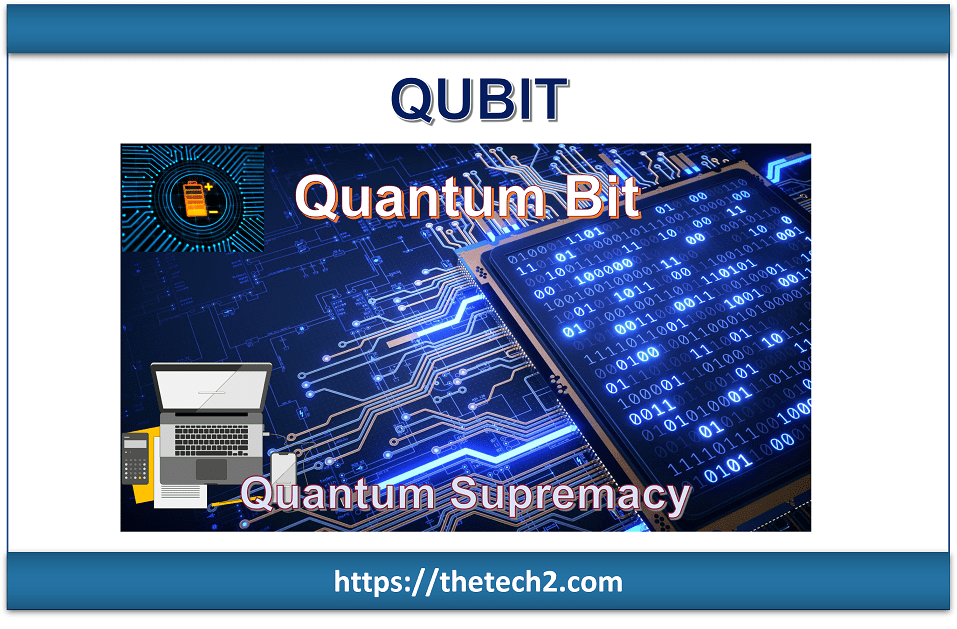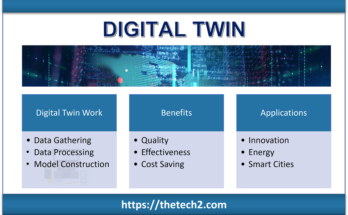A qubit, “quantum bit,” is the fundamental unit of information in quantum computing, and it is the quantum equivalent of a conventional bit used in classical computing.

A bit in traditional programming can have one of two values: 0 or 1. A qubit in quantum computing can exist in a combination of two states, which means it can exist simultaneously in the 0 and 1 states. This superposition property allows quantum computing to execute certain computations faster than classical computers.
A qubit can also be entangled with other qubits, which indicates that one qubit’s state is dependent on the form of another. This entanglement property enables quantum computers to execute certain computations exponentially faster than classical computers, such as factoring large numbers.
Qubit Types
Superconducting circuits, trapped ions, and quantum dots are examples of physical systems that can be used to create qubits. Each technology has benefits and disadvantages regarding scalability, reliability, and noise.
Developing qubits and quantum computing hardware is a quickly changing field, with researchers constantly striving to improve qubit performance and reliability.
Superconducting Circuits
One of the main approaches for implementing qubits in quantum computing is superconducting circuits. They comprise minimal electrical circuitry made of superconducting materials that can be cooled to shallow temperatures.
Current flows through a loop of superconducting material in a superconducting qubit, creating a magnetic field that can symbolize the qubit state. The qubit state can be changed and read by applying microwave pulses to the circuit.
Superconducting qubits have the advantage of being fabricated using standard microfabrication techniques similar to those used in the semiconductor sector. As a result, they are relatively simple to produce and scale up.
Another benefit of superconducting qubits is that they have relatively long coherence times, which means they can retain their quantum state long before decoherence occurs. This is essential when running quantum algorithms that require many operations to be performed on this technology.
Several leading quantum computing companies use superconducting circuits, including IBM, Google, and Rigetti. These businesses are developing and improving superconducting qubit performance and investigating possible applications for quantum computing using this technology.
Trapped ions
Another promising method for implementing this technology in quantum computing is trapped ions. Ions (usually charged atoms) are trapped using electromagnetic fields and used as qubits.
The internal energy states of the ion indicate the qubit state in a trapped ion qubit. Laser pulses that interact with the ion’s internal energy levels can be used to manipulate and read out the ion’s condition.
Trapped ion qubits have a high degree of coherence, which means they can keep their quantum state for relatively extended periods. This is because the trapping fields isolate ions from their surroundings, reducing the impacts of decoherence.
The identical laser pulses that change the qubit state can also entangle trapped ion qubits with other ions. This enables the development of larger-scale quantum systems capable of conducting quantum algorithms and simulations.
One of the difficulties with trapped ion qubits is that trapping and manipulating the ions requires a highly controlled atmosphere and complex experimental setups. This can make scaling up more challenging and costly when compared to other qubit implementations, such as superconducting circuits.
Despite these obstacles, several research organizations and businesses, including IonQ and Honeywell, are actively developing and improving trapped ion qubits for quantum computing.
Quantum Dots
Another method for implementing this technology in quantum computing is quantum dots, which are minuscule semiconductor particles capable of trapping and manipulating individual electrons that can be used as qubits.
The spin state of an electron enclosed in a quantum dot represents the qubit state in a quantum dot qubit. Magnetic fields and microwave pulses can manipulate and detect electron spin.
Scalability is one of the benefits of quantum dot qubits. Because quantum dots can be made using standard semiconductor fabrication methods, they can be integrated into existing electronic devices and scaled to large qubit arrays.
Another advantage of quantum dot qubits is their comparatively long coherence times due to the quantum dot structure isolating the electron spin from its surroundings.
However, quantum dot qubits confront several challenges, including the need for precise control over the position and number of trapped electrons in the quantum dot and the effects of electron-electron interactions and environmental noise.
Despite these obstacles, several study organizations and corporations, including Microsoft and Intel, are actively developing and improving quantum dot qubits for quantum computing.
The Future of QUBIT
This technology can exist in multiple states simultaneously, making them robust for performing certain computations. The future of this technology is an exciting area of research, with many advancements and breakthroughs expected in the coming years.
Qubit is Fragile
Quantum bits are regarded as more fragile than traditional bits because they are susceptible to their surroundings. Quantum bits are quantum objects susceptible to noise and interference from their environment, such as electromagnetic radiation and temperature fluctuations.
These environmental variables can cause a qubit’s quantum state to decay or lose coherence, resulting in errors in quantum computations. Additionally, measurements can readily disturb qubits, affecting their quantum state.
To address qubit fragility, researchers are creating error-correction codes and fault-tolerant quantum computing architectures, as well as improving the quality of qubits themselves through improved materials and fabrication methods.
Qubit is Stable
Topological Quantum bits, such as superconducting or ion trap qubits, are considered more secure than others. Topological qubits depend on a phenomenon known as topological protection, which makes them immune to errors caused by certain types of noise and interference.
The quantum states of topological qubits are protected by the topology of their physical structure, which gives birth to topological protection. Topological qubits, in particular, are built on topological matter, a form of matter with unique properties that make it resistant to specific environmental noise.
You may be interested in more Big Data topics.



5 Comments on “QUBIT – Quantum Bit”